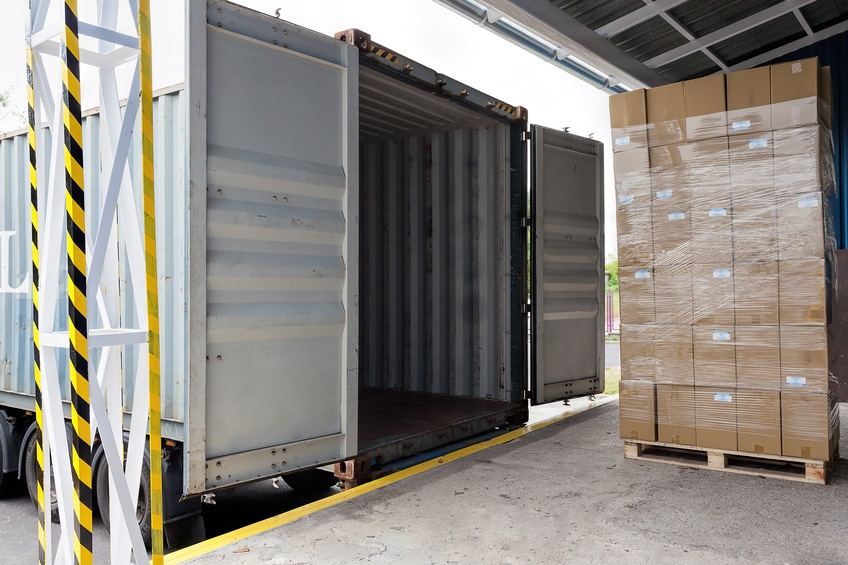June 16, 2016

Food safety expert Gary Kestenbaum provides thought, opinions and advice on the latest FSMA rules governing transportation of non-comestibles in the food industry and its application to packaging.
In April of this year, the FDA finalized and published its latest FSMA rule pertaining to the Sanitary Transportation of Human and Animal Food.
Explanatory language on the FDA website and within the four page Sanitary Transportation Rule guidance summary includes the following facts and goals:
The Transportation Rule is one of seven foundational rules proposed since January 2013 to create a modern, risk-based framework for food safety.
Language within the Rule describes the intent to prevent practices during transportation that create food safety risks, such as failure to properly refrigerate food, inadequate cleaning of vehicles between loads, and failure to properly protect food.
FDA strives to “protect foods from farm to table by keeping them safe from contamination” (in this case, during transportation).
FSMA and the rules adopted there-from builds on safeguards envisioned in the 2005 Sanitary Food Transportation Act (SFTA).
I commend the professionals at the FDA, related agencies and committees, knowing how diligently they worked to seek input from industry practitioners and satisfy stakeholders on the path to drafting, adopting and implementing subject-specific rules and procedures under the FSMA umbrella. The rules represent continuing efforts by the Federal Government to improve and unify safe practices and food integrity as part of the consumer-driven mandate which drove the creation of FSMA.
After reviewing the four page Sanitary Transportation Rule guidance document, and without further clarification from FDA or CFSAN, I interpret the language to exempt transported non-comestible cargo from the rule, including empty packages, packaging materials and components.
Generally speaking, I understand concepts of scope prioritization, focus of resources and controls driven by risk likelihood and severity. However, I am disappointed with what I interpret as under-consideration or inadequate control of food-related non-comestibles and related mechanisms.
A lesson learned from adhesives and envelopes
I offer a factual analogy: In the early 1970s, I worked in a water-based adhesive manufacturing facility. One particular product within the portfolio was a gummed label and stamp adhesive, intended for use on items which consumers might “lick” to activate, such as envelopes and postage stamps (well before “pressure-sensitive” became the standard). The adhesive was formulated many years prior, then underwent updated toxicological review and, thus, reformulation to exclude ingredients considered toxic, unsanitary or inappropriate for human ingestion. Corporate quality and safety functions had reacted to one or more criteria and had created a safer, consumer friendly formula to reduce the risk of humans (who might lick the products) ingesting ingredients and substances considered inappropriate for human consumption. The reformulation was tested by product development, approved and commercialized.
Batches of aqueous adhesives, including the gummed label adhesive, were blended in a large tank under agitation. Bulk ingredients were added via a single, dedicated chute. Over time, chutes became encrusted with a thick, elastic “skin,” likely composed of plasticizers, starches, gums and other ingredients added during batching processes. As I walked by the tank and its chute on a day that gummed label adhesive was being batched, it struck me that licking a gummed stamp or envelope was equivalent to licking that elastic skin attached to that chute, caked with the remnants of countless chemical substances.
The symbolism of the adhesive chute remains in my head as I ask the following question: when food safety regulators and experts apply effort and resources towards protecting the food supply chain from “farm to table,” why is it that “the table” ends up being exempted from the same compliance rules applied to “the farm”?
At-risk examples
In my food industry experience, I believe that shipping, transportation, storage and similar service-related functions are at risk of under-support or non-compliance with best food safety practices. Examples include:
Unsanitary internal trailer contact surfaces;
Unsanitary loading dock-related conditions;
Inadequate equipment and area inspections;
Insufficient bulk container abuse and failure testing (i.e. corrosives, chemicals, pressure and temperature) ;
Testing following cleaning of transport containers and related accessories;
Untested or non-sanitized equipment storage conditions;
Existence of unscheduled or unprotected non-ductile-failing accessory materials in proximity to food and packaging;
Inadequate or missing documentation and standard performance procedures.
None of these deficiencies would be ignored or approved by a food safety professional if they were determined to have occurred in food preparation or handling areas. Why then, should they not be considered risk generators, in need of guidance and control, in areas and on surfaces where food-related goods are stored, transported and staged?
A packaging analogy
Another analogy: If you witnessed a sealed container of packaged food that you purchased and intended to open and feed to your family, become unexpectedly contacted with shards of broken glass, raw chicken juice, cleanser, soil from a vacuum cleaner bag, floor sweepings or other substance you considered a contaminant, would you do nothing, wipe it with a paper towel, run it under water in a sink, dry it with a paper towel, open it and then feed it to your kids? Or, would you think long and hard about whether you wanted to use or consume that food at all, given the questions in your mind that the safety of the food may have been compromised by the contamination and not eliminated to your satisfaction? Might you think to yourself, “gee, I really don’t want to throw this (whatever it is) away, but it’s just not worth taking the risk of hurting my family by hoping that I removed contaminants I can’t really see”.
In general, I remain concerned about the message sent and interpretation by industry when non-comestible food-use goods and support services such as packaging, shipping and receiving, storage, disposable utensils, napkins, trays, et al are exempted from the latest regulations or guidance intended to improve safety and reduce risk within the food supply chain. FSMA and its rules were created to modernize (the food supply chain), protect (consumers), prevent (contamination), control (food-related environments) and safeguard (the processes supporting same).
Why not apply those important precepts to food-related support services and non-comestibles?
Packaging materials, containers, food ingredients and other items within the U.S. food supply vary, but what doesn’t vary is the fact that those materials have to be transported and stored in conjunction with surfaces and environments. Whether the load is shipped in a dry van, a box truck, a container or a reefer; on a pallet, a platform, a slip-sheet or a floor, it is in the interests of both consumer and supplier to understand, control and maintain sanitary quality of those food-related contact surfaces and environments, as well as food accessory items such as packaging components, packaging containers, pallets, platforms, totes, napkins, utensils and other food-related non-comestibles that are transported and handled.
Advice to consider and steps to take
I urge you to take responsible positions and consider the following behaviors:
Review, understand and embrace FSMA rules, guidance procedures and responsibilities, as they are well considered, well explained and contemporary. Resist ignoring or trivializing guidance and intent simply because you believe your food-related goods or services have been formally excluded from a regulation.
Presume that your customers expect the goods and services they purchase to be sanitary, food industry - suitable and contamination-free “end-to-end”, and that they will demand written proof of same via the independent 3rd party audit process. Apply those same expectations and concepts throughout your supply chain as you ….
Challenge your suppliers to provide food- related non-comestible good and services accompanied by standard, comprehensive food industry disclosure documents, component details and certifications which demonstrate suitability for safe, continuous food and comestible applications.
Evaluate your non-comestible food related goods and processes from intake to discharge and perform the same type of risk assessment as you would for food items. Create a “schedule of unknowns,” e.g. :
“I don’t know if incoming pallets or platforms are clean, sanitary or suitable for use in a food environment”
“Were bundles of incoming knockdown corrugated items exposed to contamination during shipping or handling?”
“I don’t know if trailer floors or walls were properly sanitized before my goods were loaded”
“If a lift truck handling goods destined for my supply chain drove onto an unsanitary surface or through an unsanitary condition, did that expose my incoming goods and my facility to contamination?”
“What procedures can I implement to effectively reduce or control food safety contamination risks which may occur in upstream supply chain services and processes and, thus, affect integrity within my process?”
Assign a category and functional responsibility to each list item. Obtain guidance from functional SMEs qualifying risk occurrence level (low, medium, high) as well as the harm to human safety from occurrence (none, limited, severe) and suggestions for implementing effective controls. When applicable, provide basic food safety guidance to involved functional SMEs.
If you are involved in the supply of goods or services to the food industry, I encourage you to consider the intent of FSMA which tasks suppliers and providers with the responsibility to understand, evaluate, foresee, create and maintain a safe, suitable and sanitary environment not only for the manufacture, processing and handling of edible foods, but also for the non-comestible items used in support of same.

Gary Kestenbaum has 40 years’ experience in the food and packaging industries, 6 as a supplier with National Starch, 18 as a product developer with General/Kraft Foods and 15 as a packaging engineer and developer with Kraft. As senior food packaging safety consultant with EHA Consulting Group, Kestenbaum provides guidance on packaging safety and suitability-related projects for raw material manufacturers, converters and associated supporting professionals. He can be reached at [email protected] or 410-484-9133. The website is www.ehagroup.com.
About the Author(s)
You May Also Like




